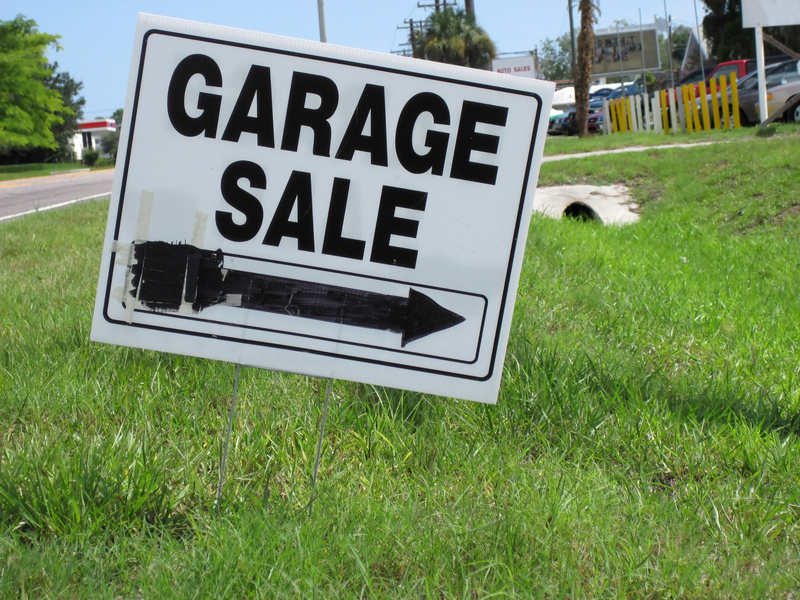Comprehending Hazardous Waste: What You Should Know
Hazardous waste is an essential topic for businesses, homeowners, environmentalists, and anyone who cares about the well-being of our planet. With the constant growth in industrial activities and consumption, understanding hazardous waste management is more significant than ever. This informative article explores what hazardous waste is, how to identify it, its environmental impacts, legal guidelines, and best practices for safe disposal. Let's break down hazardous waste comprehension for informed and responsible handling.
What Is Hazardous Waste?
In simple terms, hazardous waste refers to materials or substances that pose a potential threat to human health or the environment due to their toxic, corrosive, flammable, or reactive characteristics. Unlike ordinary household trash, these wastes require special handling and disposal.
Key Characteristics of Hazardous Waste
- Toxicity: Harmful to living organisms through contact or ingestion.
- Corrosivity: Can corrode metals or destroy living tissue.
- Reactivity: May cause dangerous reactions like explosions or gas releases.
- Ignitability: Easily catches fire under normal conditions.
Different Forms of Hazardous Waste
- Solid Waste: Contaminated soil or industrial debris.
- Liquid Waste: Chemical solvents, wastewater, discarded paints and cleaners.
- Gaseous Waste: Emissions from certain industrial processes.

Sources of Hazardous Waste
Comprehending hazardous waste means understanding its diverse origins. Hazardous materials are not solely an industrial issue; many household items also qualify.
Industrial Sources
- Manufacturing: Chemical, electronics, and pharmaceutical plants often produce liquid or solid hazardous wastes.
- Mining: Extraction and processing activities create by-products and leachates containing metals and harmful chemicals.
- Medical Facilities: Hospitals and laboratories may generate infectious sharps, medicines, and solvents.
Household Sources
- Batteries: Lead-acid (car batteries), lithium-ion, and household batteries contain metals and acids.
- Cleaning Agents: Bleach, ammonia, and strong solvents can be hazardous if improperly discarded.
- Pesticides and Herbicides: Toxic chemicals for pest control and lawn care may contaminate soil and water.
- Paints and Solvents: Oil-based paints, thinners, and varnishes contain flammable and toxic components.
- Electronics Waste: Old computers, phones, and appliances contain heavy metals and chemicals.
The Importance of Safe Hazardous Waste Management
The consequences of improper hazardous waste management can be catastrophic. It can result in environmental pollution, endanger public health, destroy wildlife habitats, and even trigger legal liabilities for responsible parties.
Impacts on the Environment
- Soil Contamination: Hazardous wastes leaching into the ground can damage crops, reduce soil quality, and enter the food chain.
- Water Pollution: Improper disposal can allow toxins to infiltrate groundwater and rivers, threatening aquatic ecosystems and drinking water supplies.
- Air Pollution: Some hazardous wastes emit dangerous fumes, affecting air quality and contributing to smog and respiratory problems.
Impacts on Human Health
- Acute Exposure: Direct contact with chemicals can cause burns, poisoning, and respiratory ailments.
- Chronic Exposure: Long-term contact or low-level exposure may lead to cancer, organ failure, or developmental disorders.
Grasping hazardous waste issues is thus vital for individuals and organizations to ensure safety and compliance.
Laws and Regulations Governing Hazardous Waste
International Conventions
- Basel Convention: Controls transboundary movements of hazardous wastes and their disposal to prevent dumping.
- Stockholm Convention: Eliminates or restricts persistent organic pollutants (POPs).
National Regulations (U.S. Example)
- Resource Conservation and Recovery Act (RCRA): The EPA enforces this act to regulate generation, transportation, treatment, storage, and disposal of hazardous wastes.
- Comprehensive Environmental Response, Compensation, and Liability Act (CERCLA/Superfund): Focuses on cleaning up existing hazardous sites and holding polluters financially accountable.
Why Compliance Matters
- Legal Penalties: Non-compliance can result in hefty fines, lawsuits, and even closure of facilities.
- Reputation Risk: Violations can damage public image and stakeholder trust.
- Contribution to Public Health: Proper compliance protects communities and the environment.
How to Identify Hazardous Waste
Comprehending hazardous waste regulations starts with correctly classifying what qualifies. Not all waste with an intimidating label is officially classified as hazardous. Regulatory agencies publish specific lists and criteria for waste identification.
Listed vs. Characteristic Wastes
- Listed Wastes: Specifically named by authorities (such as EPA List F, K, P, and U wastes).
- Characteristic Wastes: Exhibiting hazardous properties: ignitability, corrosivity, reactivity, or toxicity.
Tools for Identification
- Material Safety Data Sheets (MSDS): Provide details on chemical properties and handling precautions.
- Regulatory Lists: Cross-reference waste against official lists published by government agencies.
- Professional Testing: Chemical analysis if identification is unclear.
The Lifecycle of Hazardous Waste
A thorough understanding of hazardous waste management encompasses every stage, from creation to final disposal.
1. Generation
Waste is created during manufacturing, product use, or as a byproduct of chemical reactions.
2. Storage and Transportation
- Storage: Secure containers, clear labels, and secondary containment prevent spills.
- Transportation: Specialized vehicles and trained personnel ensure safe movement, complying with laws like the Department of Transportation's (DOT) regulations.
3. Treatment
- Physical Treatment: Filtration, sedimentation, and encapsulation reduce hazard or volume.
- Chemical Treatment: Neutralization or chemical conversion renders wastes less dangerous.
- Biological Treatment: Use of certain microbes to break down hazardous substances.
4. Disposal
- Landfills: Engineered, lined sites designed to isolate hazardous materials from the environment.
- Incineration: High-temperature combustion eliminates organic hazardous wastes, but may generate air pollution if not properly managed.
- Recycling and Recovery: Extracting valuable materials like metals or solvents for reuse, reducing overall waste.
Best Practices for Handling Hazardous Waste
Whether at home or in a business, handling hazardous waste responsibly limits environmental risks and protects health.
Steps for Safe Management
- Identify and Label: Always check packaging for hazard warnings. Label container contents, hazards, and dates.
- Segregate Waste: Store different types separately - mixing can trigger dangerous reactions.
- Use Correct Containers: Choose containers that are compatible with waste material and meet legal standards.
- Limit Exposure: Wear protective gloves, masks, and goggles as required. Ensure proper ventilation when handling volatile substances.
- Follow Local Guidelines: Participate in community hazardous waste collection events or contract certified hazardous waste disposal companies.
Common Mistakes to Avoid
- Pouring chemicals down the drain or toilet.
- Throwing batteries or electronics in regular trash bins.
- Storing incompatible chemicals together.
- Ignoring safety data sheets or label instructions.

Future of Hazardous Waste Management
As technology and regulations evolve, hazardous waste management is becoming safer and more sustainable. Innovations in recycling, chemical treatment, and remote monitoring are helping reduce the impact of hazardous materials. Industries are shifting toward green chemistry--designing products and processes that minimize the creation of hazardous substances at the source.
- Digital Tracking: Blockchain and IoT devices enable better waste tracking from creation to disposal.
- Cleaner Alternatives: Companies are replacing highly toxic substances with safer alternatives.
- Advanced Treatment: Plasma arc, pyrolysis, and enhanced bioremediation offer innovative disposal options.
- Public Awareness: Education campaigns empower individuals and organizations to make better disposal choices.
Conclusion: Why Comprehending Hazardous Waste Matters
Grasping the essentials of hazardous waste is more than an environmental responsibility. It is crucial for:
- Protecting human and animal health.
- Maintaining clean water, soil, and air.
- Complying with increasingly strict legal standards.
- Ensuring the safety of employees, customers, and the public.
Whether dealing with industrial processes or clearing out a garage, proper hazardous waste comprehension helps us prevent pollution, reduce health risks, and create a more sustainable world. If you suspect you have hazardous materials, always consult local authorities or certified professionals for guidance on safe and legal disposal.